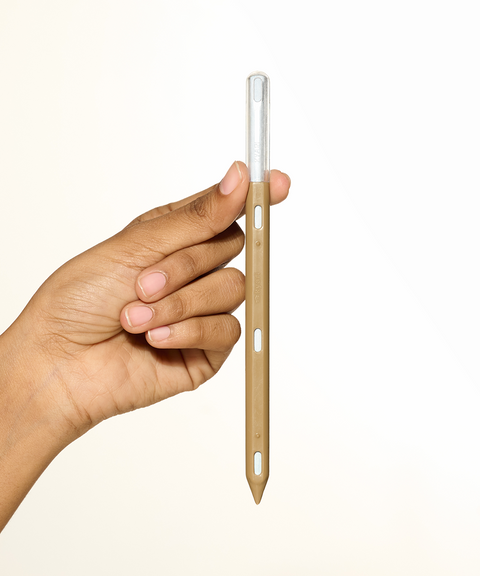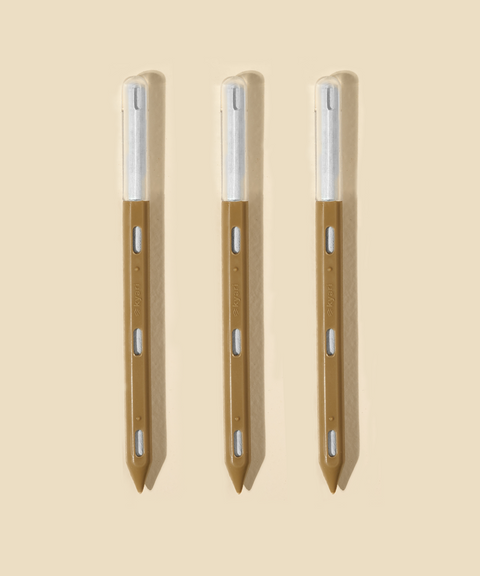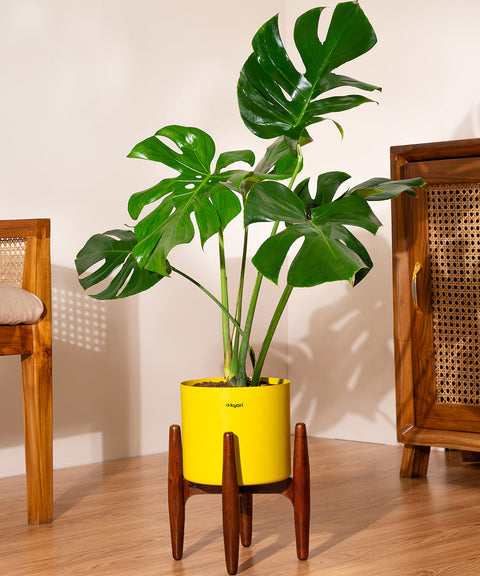About
Aralia Plant
Aralia plants, known for their intricate leaf patterns and diverse forms, bring a touch of the exotic to indoor gardens. Their lush, textured foliage makes them a captivating choice for plant enthusiasts seeking to add visual interest to their spaces.
Origin
Native to tropical regions of Asia and the Americas
Light
Prefers bright, indirect light but can tolerate lower light conditions. Direct sunlight can cause leaf scorch. Aralias are adaptable but will thrive and grow more vigorously with sufficient light

Water
Water when the top inch of soil feels dry. Aralias prefer consistently moist soil but can suffer from root rot if overwatered. Adjust watering frequency based on light exposure and indoor climate
Humidity
Thrives in high humidity but can adapt to average household levels. Regular misting or using a humidifier can help maintain optimal humidity, especially in drier climates.
Did you know that the Aralia plant has a secret superhero identity? Its lacy leaves were once believed to have the power to repel negative energy and bad vibes. So, having an Aralia at home is like having a leafy superhero guarding your space—ready to ward off any bad days with its green, lacy cape!
Placement
Aralia plants are known for their vibrant energy and ability to enhance the aesthetic appeal of any room. Here’s where to place them
Adds a touch of greenery and improves air quality. Position it near a window with indirect light to showcase its intricate foliage.
Enhances focus and creativity. The unique leaf patterns can inspire and uplift the workspace
Thrives in the high humidity environment. The bathroom's humidity helps keep the plant's leaves lush and healthy
Frequently Asked Questions
The ideal temperature for an Aralia plant is between 60°F to 75°F (16°C to 24°C). Aralias prefer warm
Water your Aralia when the top inch of soil feels dry. Adjust the frequency based on light exposure and indoor climate
Aralia plants prefer bright
Place your Aralia in a bright
Trim off any dead or yellowing leaves and ensure the plant is free from dust. Regular pruning helps maintain its shape and encourages new growth.
Wilting leaves can be caused by underwatering or overwatering. Adjust watering schedule to ensure soil is consistently moist but not soggy.
Yellowing leaves indicate overwatering or nutrient deficiency. Improve drainage and consider adding a balanced fertilizer.
Keep the plant clean by wiping the leaves and inspecting regularly for pests. Use insecticidal soap if necessary. Aralias can be susceptible to spider mites and aphids.
Brown leaves can indicate low humidity or inconsistent watering. Increase humidity and ensure regular
Curling leaves can indicate environmental stress such as low humidity or drafts. Adjust the plant’s location and ensure it is receiving appropriate care.








 Limited Time Deal
Limited Time Deal
 BYOB - Small Plants
BYOB - Small Plants































































































